Fall 2019 - Archived Newsletter
This online publication is produced each semester to recognize faculty and students and their ongoing work. More information can be accessed by clicking on the topics below.
Dear Colleagues,
I am pleased to share that grant and research activities at Cal State Long Beach continue to be successful.
The campus continues to invest heavily in the research infrastructure to revitalize Research, Scholarship and Creative Activity (RSCA) and the competitiveness for external funding opportunities that align with our mission and with faculty interests and expertise.
This effort has included the investment of approximately $1.7 million allocated to colleges toward RSCA; $200,000 from the Chancellor’s Office for mini-grants and summer stipends; $100,000 for the Office of Research and Sponsored Programs (ORSP) Multidisciplinary Research Award; and $200,000 for the Summer Student Research Assistantship. In addition, ORSP initiated two new programs to support multidisciplinary research and open access publishing. A campus-wide 16-member Multidisciplinary Research Advisory Committee (MRAC) was established to plan the Multidisciplinary Mixer event. A total of 124 individuals attended. As results, ORSP received 21 applications for its 2019-2020 ORSP Multidisciplinary Research Award; about a 3-fold increase over the past 5 years. Open access (OA) publishing for research articles is growing in popularity; OA publications have more than doubled in the past 5 years as more faculty wish to maximize the accessibility of their work. At CSULB, OA publications currently account for 10% of annual faculty publications, and the proportion aligns with the global trend: 13% of all 2017 publications on Web of Science were OA. ORSP allocated $20,000 in FY2019 to support research publications by CSULB faculty.
In FY 2018-2019, the Office of Research and Sponsored Programs pre-award staff assisted faculty in submitting 285 new external grant proposals requesting $100.2 million from a variety of sponsors, including federal, state, and local agencies, as well as private corporations and foundations. ORSP’s post-award staff activities are bustling as well with over 400 new and continuing projects needing to be administered, totaling close to $40 million in annual expenditures. Mary Thoen has joined the department full time to assist with these post-award services.
The Research Compliance staff work diligently to assist faculty with their research protocols. The Institutional Review Board (IRB) reviewed a total of 605 protocol submissions in AY 2018- 2019. Of those submissions reviewed, 334 were new protocols, 75 were renewal protocols, and 196 were modifications to approved protocols. To support these efforts, Mandie Claussen was hired as a Research Compliance Coordinator. In addition, the Institutional Animal Care and Use Committee (IACUC) reviewed 11 new protocols, 10 major modifications, 29 minor protocol modifications, and 35 annual reports.
We look forward to another exciting year of growth in RSCA!
Best wishes,
Simon Kim, Ph.D.
Associate Vice President
Office of Research and Sponsored Programs
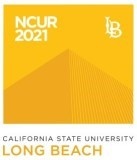
Research is Coming to the Beach
Save the dates: April 1 through April 3, 2021.
Cal State Long Beach will serve as host for the 2021 National Conference on Undergraduate Research (NCUR) that promotes undergraduate student research, scholarship and creative activity in all fields of study.
Through this annual conference, students experience a unique environment that celebrates and promotes undergraduate achievement, exemplary research and scholarships, and offers research networking on a national scale.
Cal State Long Beach will partner with Cal State Fullerton, Cal State Dominguez Hills, Cal State Los Angeles, Cal State Northridge, and Cal Poly Pomona for the annual student research event that attracts more than 4,000 students from across the United States.
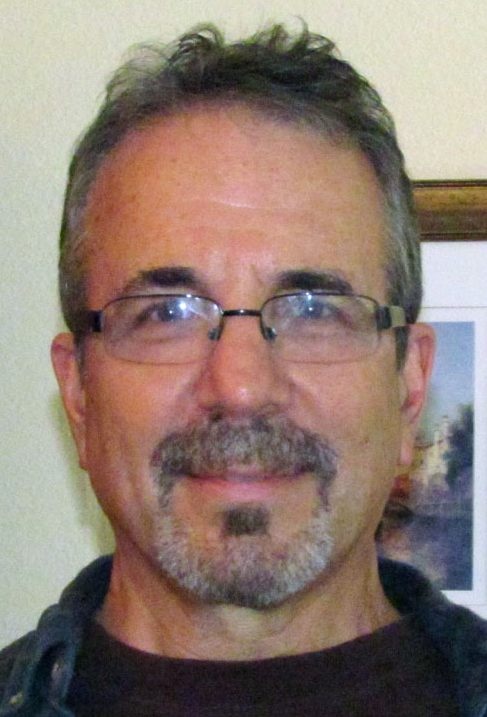
Clinical Psychologist and Professor / Co-Coordinator of the Marriage and Family Therapy Master’s Program
Advanced Studies in Education and Counseling Department
Opening Doors of Communication Safely within Families Dealing with Cancer
The young mother was dying yet she and her husband disagreed on what to tell their three young children. The father was hesitant about dropping such a hard message on the kids whereas the mother, who had undergone many rounds of chemo therapy and surgery for an aggressive brain cancer, felt an urgency to bring the children in on the fact that she likely only had months to live.
My co-therapist and I worked weekly with families as part of an innovative program and pilot study I initiated with Cedar-Sinai Medical Center and Cancer Support Community in Los Angeles, to provide an alternative to the individual, patient-based model of psychosocial services that is the standard fare at even world-class cancer centers.
A cancer diagnosis is a family affair. Studies show that distress and co-morbid psychological difficulties reverberate throughout the family and marital system and that the family relationship can be instrumental in moderating patient and caregiver distress and enhancing quality of life.
Over the past two years I have trained a small cadre of psychologists, social workers and MFTs to administer my manualized family or couple-based brief intervention called the SHARE Program (Supporting Health And Relational Effectiveness) in medical and community service settings. We have worked with couples and families with many kinds of cancer at all stages of progression, providing a safe and structured way for them to have critical conversations.
Meanwhile, with this family, we conducted initial sessions with the parents to help them develop shared goals for themselves and their family, to help them mutually understand and speak about the separate journeys each of them have tread, and how they may best work as a team; with a series of sessions with the children in which they are provided a safe and engaging way to ask their questions and tell their stories (see photo of 7 year old daughter’s “time map”– note the close-up photo that shows her drawing of “Mom and me” with post-chemo Mom’s hair falling out).
During a family session with the Smiths, the mother, even though her words were halting and limited, took control of the session and shared the fact that they had stopped treatment because it was no longer helping. She then had each child sit with her and asked if he or she understood what this meant. They were crying as she related that she wanted, with all her heart, to stay, but she would not be able to.
This was a long session with follow-up meetings in weeks thereafter. While painful, the mother felt calmed and the family’s ongoing squabbles subsequently subsided. This made space for a very meaningful three months together before the mother died.
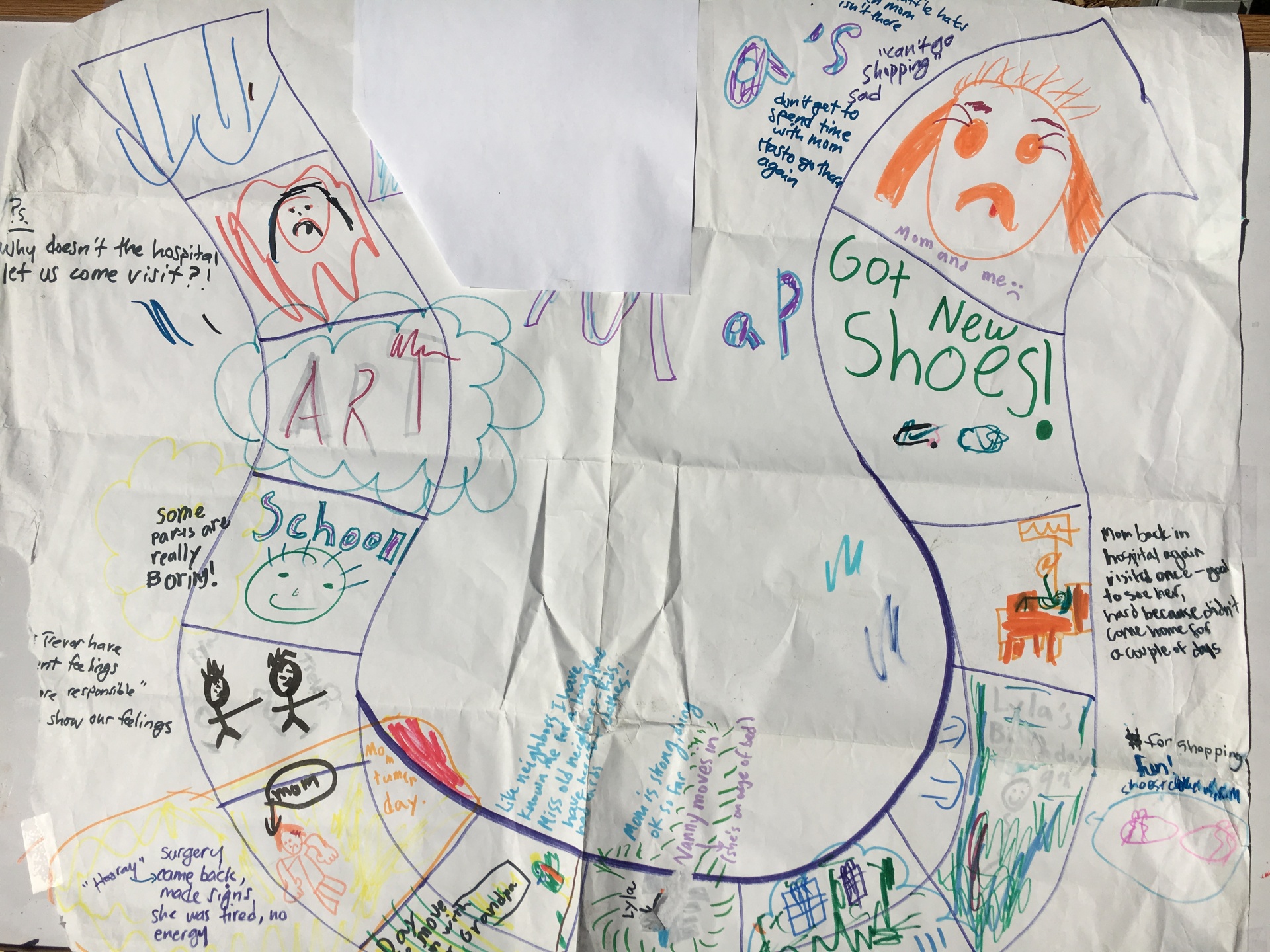
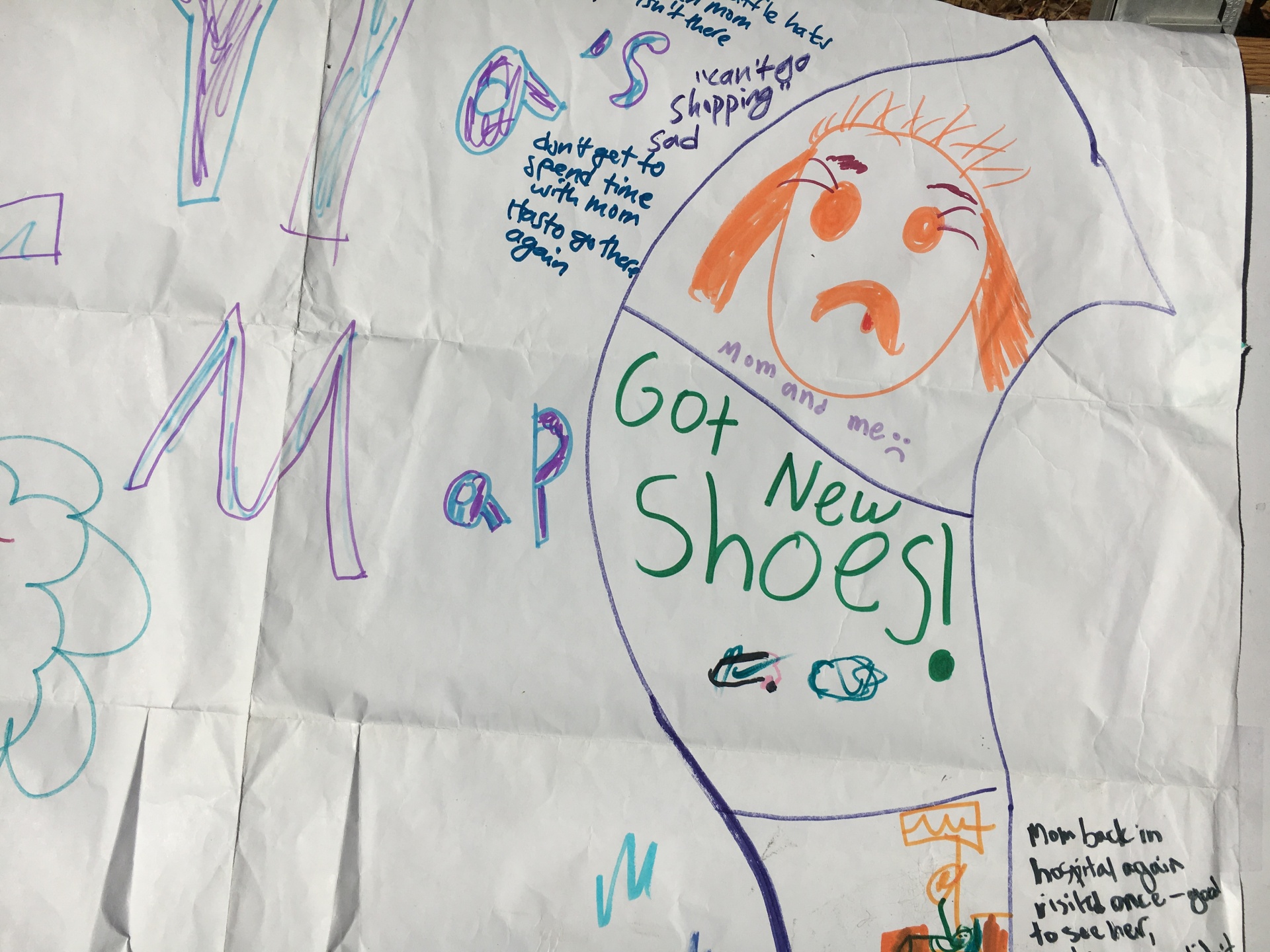
Images courtesy of William Saltzman
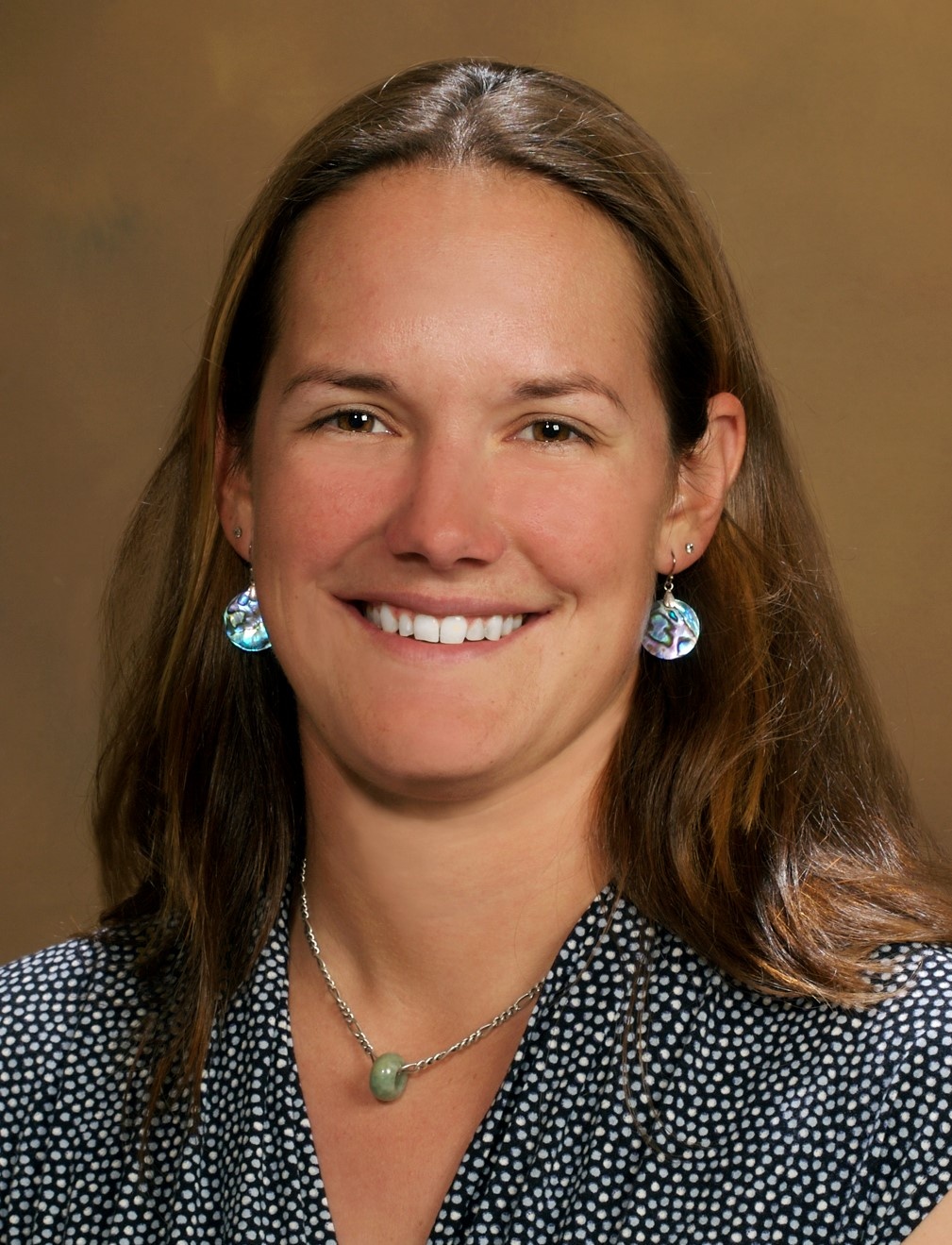
Director of Environmental Science and Policy
Biological Sciences Department
College of Natural Sciences and Mathematics
Sharing the Coast – Helping People and Marine Organisms Co-Exist on the Coast in a Changing Climate
Whenever I lecture about my research, I start by asking the audience to provide the simplest definition they can think of for a wetland. Most people hesitate but eventually answer “land that is wet.”
Being “wet” means that wetland organisms have to be adapted to live in a wet environment and deal with the stressors of low oxygen, unstable soil, and, on the coast, salty water. The uniquely adapted plants and animals that live in wetlands provide a variety of functions including providing habitat, protecting from floods, buffering land from storms, filtering water, and supporting recreation.
Despite these functions, a large percentage of our wetlands have been lost due to human activities, and those wetlands that remain are degraded. Here in coastal southern California, we pride ourselves on our connection and proximity to the beach, but development and high population along the coast increases the pressure on natural ecosystems, such as salt marshes.
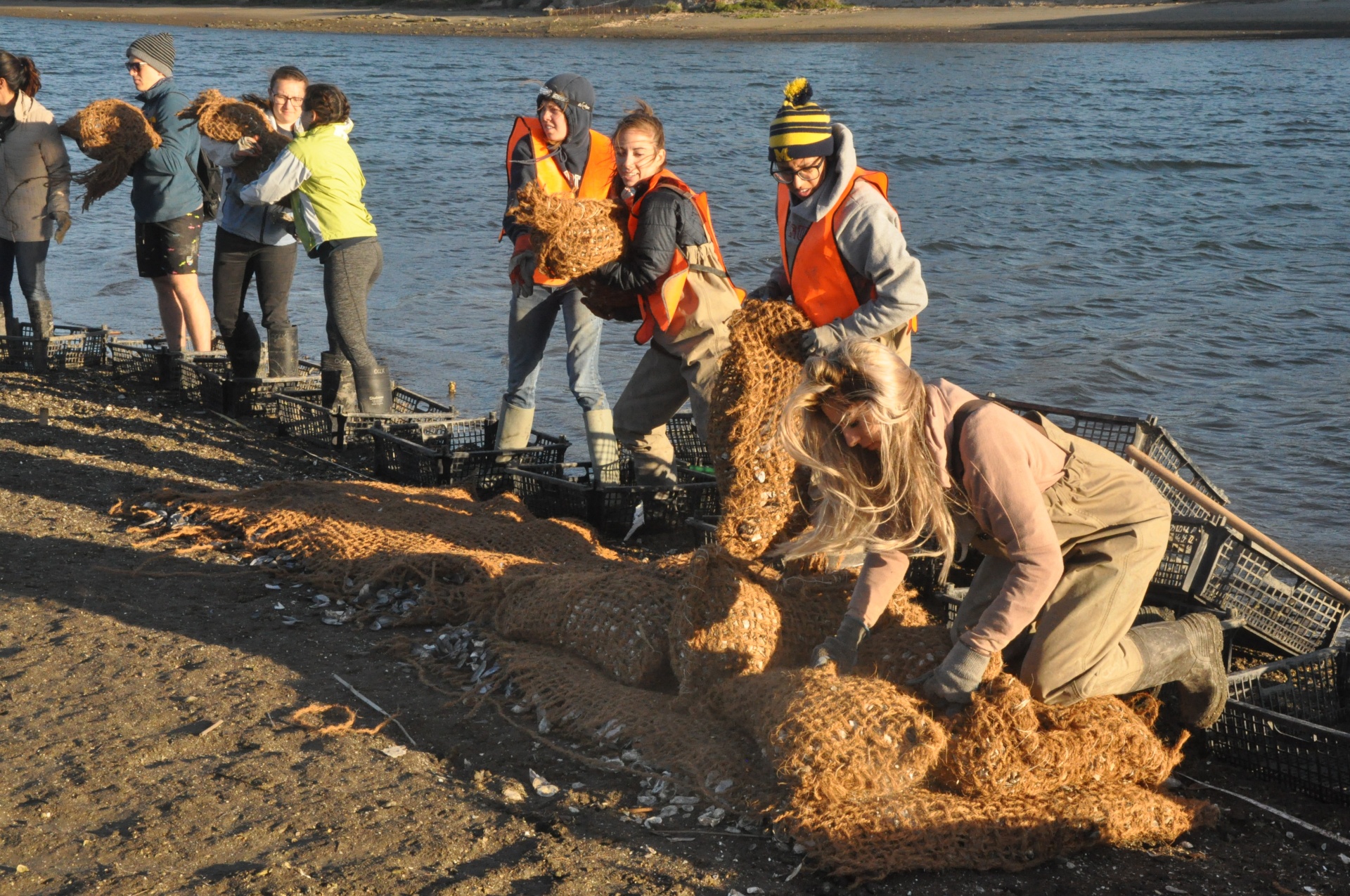
Oyster bed construction in 2017 in Newport Bay, California.
The research in my laboratory focuses on quantifying the effects of human activities on the structure and function of salt marshes. In addition to quantifying the effects of these activities, we work with land owners and resource agencies to design solutions that prevent further degradation and restore these ecosystems.
Oyster and eelgrass beds are important habitats within California bays, recognized for the ecosystem services they provide including habitat provision, trophic support, and shoreline protection. Wetlands, including oysters and eelgrass beds, have declined throughout California due to coastal development and recreational use of bays.
To address this loss and explore the best methods for restoration, we have restored native Olympia oysters and eelgrass in an innovative living shoreline approach. Living shoreline projects utilize strategically placed native plants, reef forming animals, and natural materials to stabilize and protect shorelines while preserving valuable habitats and ecosystem services. My lab, in partnership with Orange County Coastkeeper and CSU Fullerton, installed and is monitoring a living shoreline restoration project in Newport Bay.
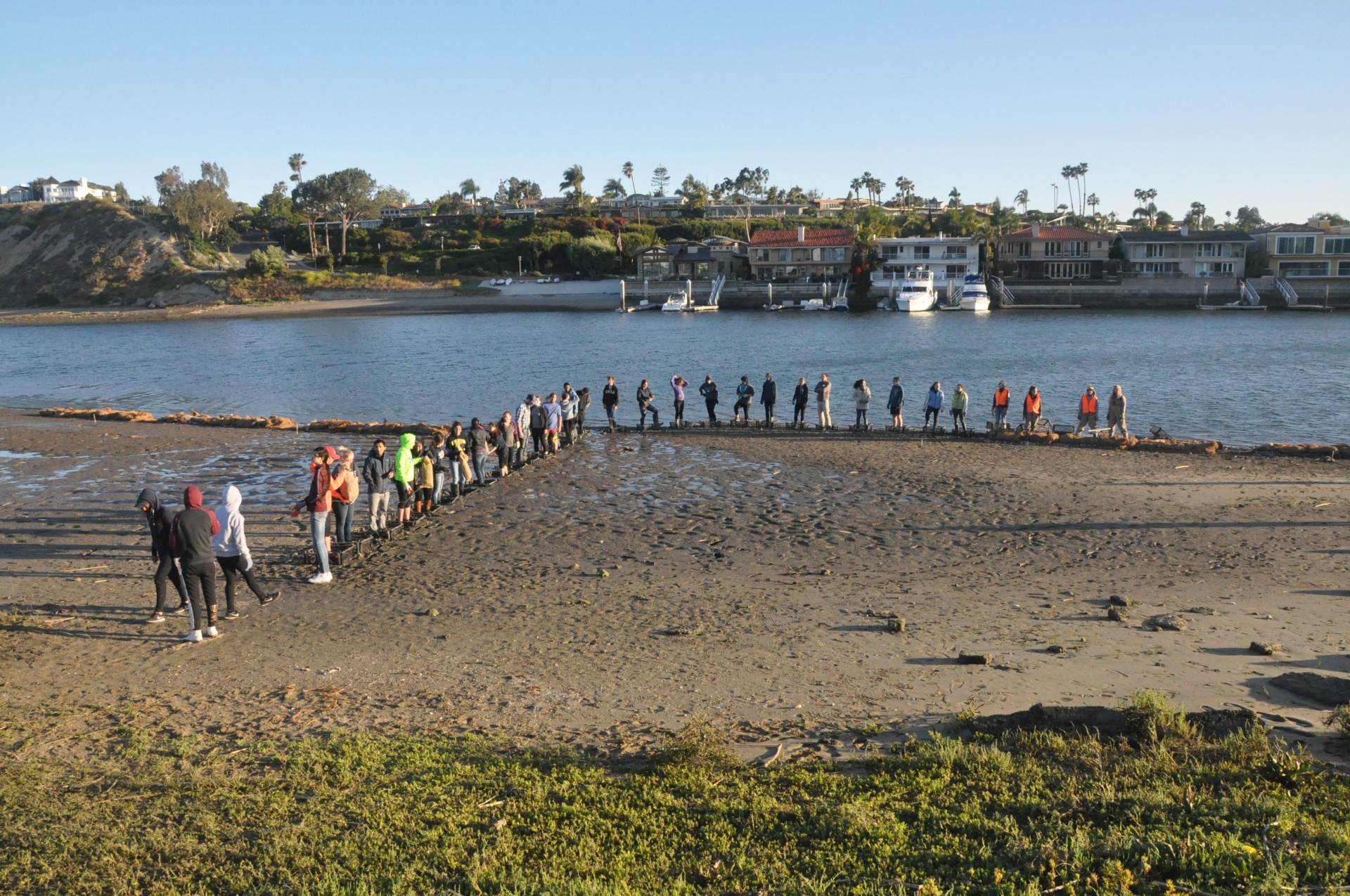
Line of volunteers making an oyster bed in 2017 in Newport Bay, California.
We established eelgrass habitat in June 2016 and installed oyster shell beds in May 2017 for a combined total restoration area of 1,520 square meters (0.4 acres). Overall, after two years, the project increased the abundance of oyster and eelgrass populations in Upper Newport Bay. Through our single-species and integrated multiple-species restoration treatments, we see signs that integrated oyster and eelgrass restoration can compensate for losses of invertebrates associated with lost mudflats and can support fish communities.
Cities such as Newport Beach are vulnerable to economic damages caused from sea level rise because of the amount of property at risk of increased erosion from rising sea levels and increased wave energy from storms. Because of this, the development of efficient coastal infrastructure is key to the resilience of the region.
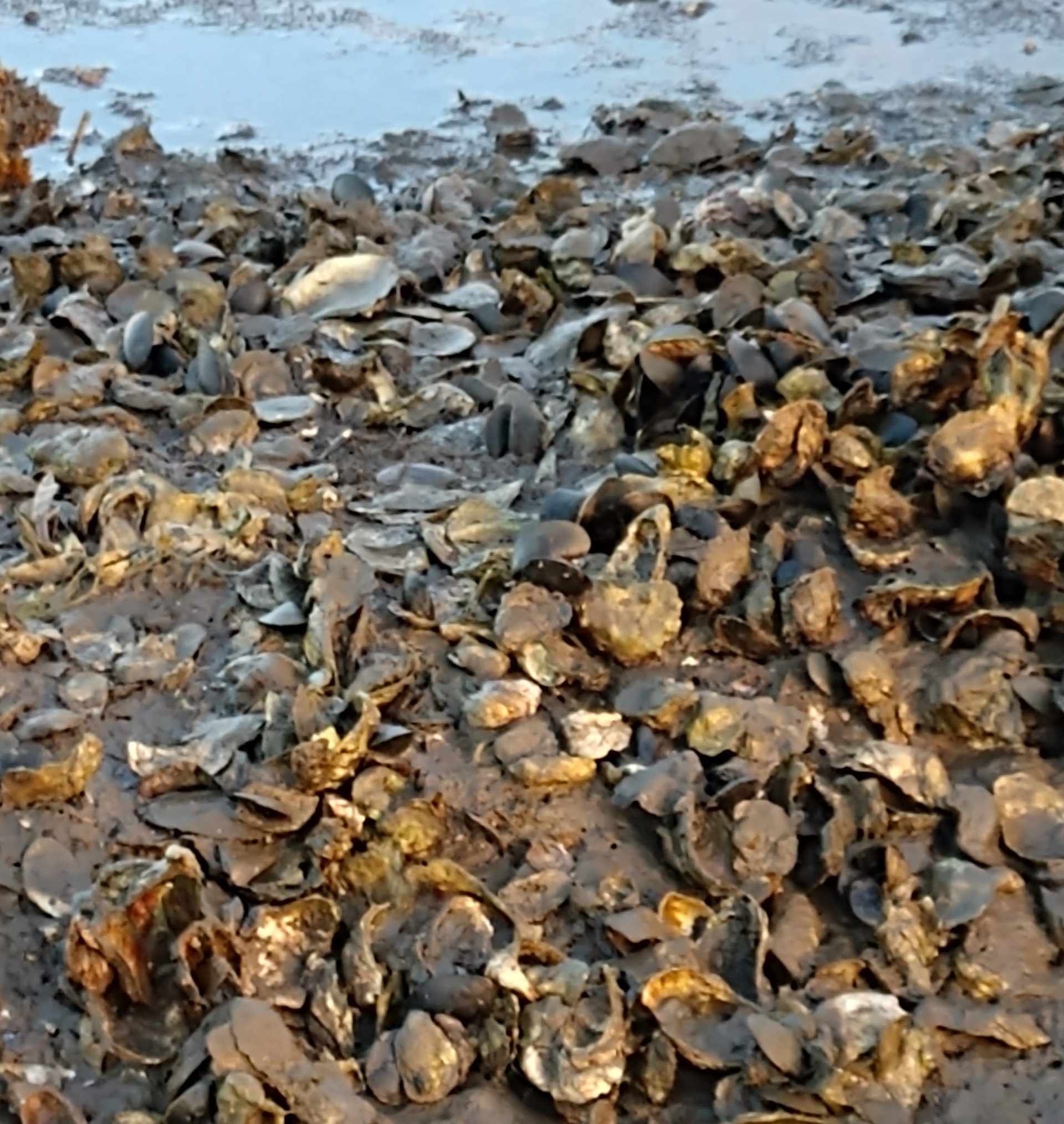
Oyster Bed in Newport Bay, California.
Images courtesy of Christine Whitcraft
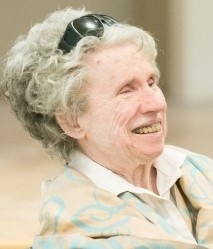
Health Science Department
College of Health and Human Services
A Wonderful Journey: Enhancing the Quality of Life among Older Adult Residents and Supporting the Successful Graduation of Students with Disabilities in STEM Disciplines
In my role as a researcher and professor, one of my greatest joys is to work on projects that involve the community, collaborate on multidisciplinary projects with faculty, and empower our students to work inter-professionally. I am privileged to be the PI on three projects.
First, my two Co-PIs Dr. Theodora Papachristou (Health Science), Dr. Long Wang (Nutrition and Dietetics) and consultant Dr. Gail Frank (Nutrition and Dietetics), we created the program Culture of Health at the American Gold Star Manor (AGSM).
AGSM is a residential community of low-income, independent living older adults (60+ years). Unlike other older adult communities, AGSM shares a connection with the U.S. military service, either as an American Gold Star parent whose child was killed in military combat, OR a military veteran.
Research demonstrates that grief and Post Traumatic Stress Disorder can result in feelings of loneliness, depression, anxiety and maladaptive food consumption. Our semester-long multi-component program is designed to foster a sense of quality of life through engaging approximately 20 residents in “hands-on” nutritious cooking demonstrations, gardening activities (garden to table), and health literacy discussions.
Under my supervision, approximately 20 student interns are trained to work with older adults, develop a culturally diverse and linguistically sensitive curriculum, implement the program, and evaluate outcomes. Our motto is “Look Good, Feel Even BETTAH!”
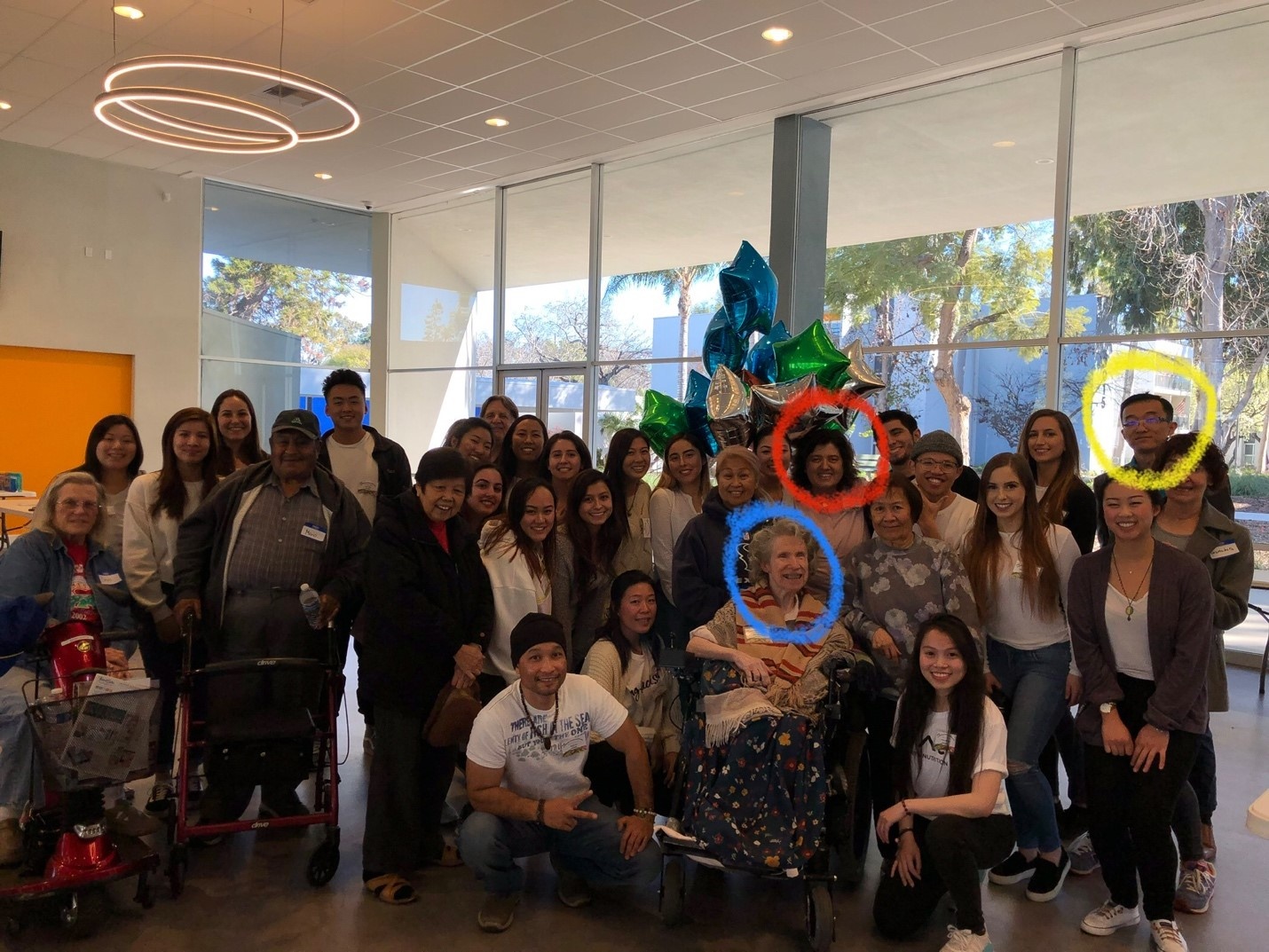
Kick-Off Event at the American Gold Star Manor during Spring 2019 with residents, faculty, and student interns from Health Science, Nutrition and Dietetics, and Recreational Therapy; Dr. Gail Farmer (circled in blue); Dr. Theodora Papachristou (circled in red); Dr. Long Wang (circled in yellow).
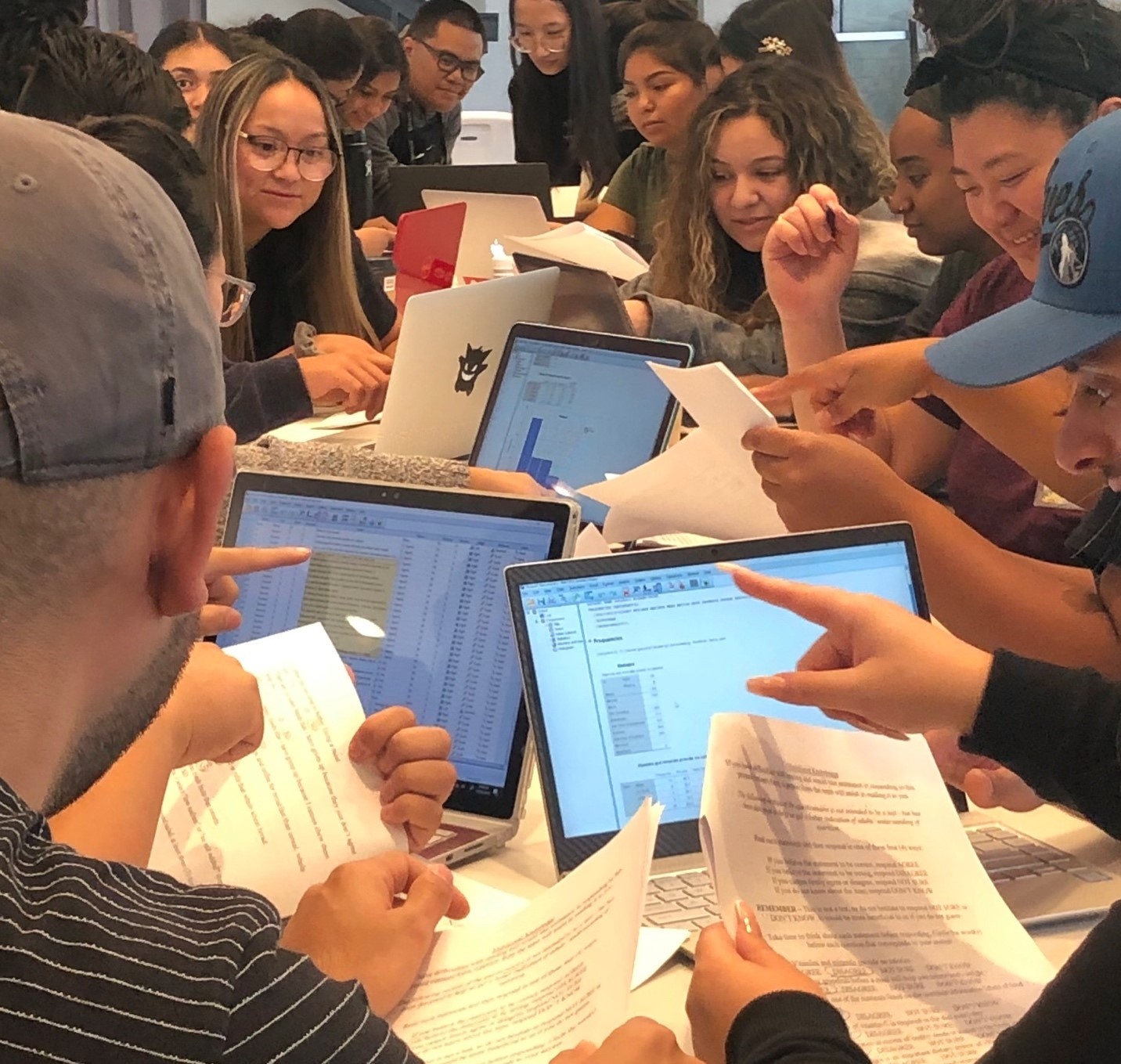
Fall 2019 student interns analyzing AGSM quanitative data using SPSS.
Second, I am also the PI on a grant sponsored by the CSU Chancellor’s Office, STEM-NET program. My Co-PI Dr. Emel Demircan (Biomedical Engineering) and I are working on a project entitled: Students with Disabilities in STEM Disciplines - Faculty Perspectives and Implementation of Universal Design for Learning.
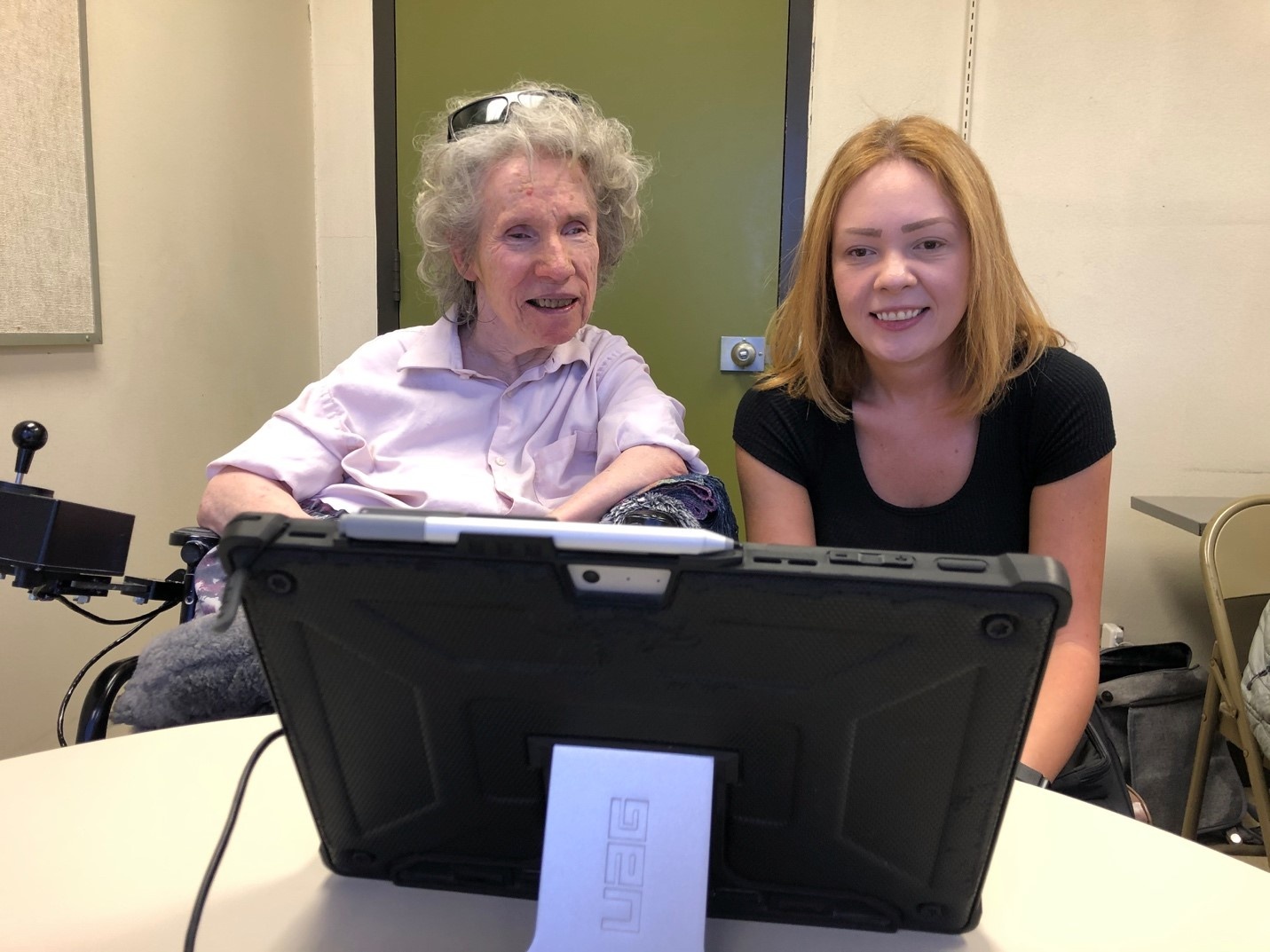
(L-R) Dr. Gail Farmer and Dr. Emel Demircan.
The National Institutes of Health and National Science Foundation consistently report a critical lack of persons with disabilities in the biomedical, behavioral and clinical workforce. At entry into college or university, significantly more students with disabilities (SWDs) identify science, technology, engineering and mathematics (STEM) as their major of choice than their peers without disabilities.
Yet, only 18 percent graduate in a STEM discipline compared to 66 percent of students without disabilities. Our purpose is to investigate a model which incorporates Universal Design for Learning and integrates robust engineering and computational tools into CSULB’s existing curriculum to support and enhance learning of SWDs in STEM fields.
Third, I am the PI on a proposal being submitted to the National Institute on Aging. My Co-PIs are Dr. Barbara Taylor (Associate Dean of Research, CNSM), Dr. Emel Demircan (COE) and Dr. Theodora Papachristou (CHHS).
We will submit a training grant (R25) that supports underserved undergraduate students (women, people of color and persons with disabilities) at CSULB to successfully graduate with a STEM degree and apply to a doctoral program with an emphasis in aging research.
GO BEACH!
Images courtesy of Gail Farmer
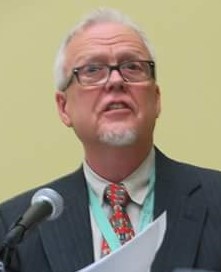
Religious Studies Department
College of Liberal Arts
LGBTQI Scholarship for the 21st Century
As a gay man and an LGBTQI (Lesbian-Gay-Bisexual-Transgender-Queer-Intersex) scholar, I see my life’s work and scholarship as connecting with the “other,” speaking up for those “on the margins,” and speaking up for my community.
In my pre-academic career, I worked with homeless youths (I had been one) and other homeless people—eventually teaching courses on homelessness at U.C. Berkeley, Stanford, and San Francisco State University. I also became an advocate for people with disabilities when it became clear that my young daughter would live with a disability for the rest of her life.
My doctoral studies at Berkeley focused on the ancient Near East (ANE) and ancient texts of Judaism—I began a second life studying ancient concepts of disability and sexual laws in the Bible and the ANE. I focused on the biblical book of Leviticus with the world’s preeminent authority, Jacob Milgrom
Why Leviticus? Because, as a weird, fascinatingly anthropological book, with passages both disturbing and helpful about disabilities, and containing “texts of terror” for LGBTQI people, it could not be ignored. Its impact on our contemporary world is too great.
In current research (with CSULB alumna Suzette Zazueta), we are writing about “Intersex and Other Gender Subversions in the Bible.” Unfortunately, popular readings of the Bible’s gender system have established a notion that gender takes (only) two forms. Genesis 5:2 and other verses are used to assert the “truth” that the two genders can only be male and female despite the bodily diversity among humans.
People in the intersex spectrum, about 1.7 percent, undermine this binary. The ancient Near Eastern world was well aware of body diversity as reflected in images of Pharaoh Akhenaten’s Klinefelter’s syndrome, the goddess Inanna/Ishtar’s androgyny, and surprisingly, in biblical texts and their rabbinic commentaries.
Genesis 1:27 can be read as suggesting God encompasses both genders, and so in a sense androgynous. One can also say that the divine gender is “hidden” as God’s “body” remains textually hidden. The early Jewish rabbis seemed to reflect this when they wrote about “a person with hidden or indeterminate gender.” Thus, a four-gender system emerges—male-female-androgyne-undetermined—when they discuss legal requirements restricted by biological sex.
I have in press, “Categories of Sexuality Indigenous to Biblical Legal Materials” in Sexuality and Law in the Hebrew Bible (Bloomsbury, March 2020). Here I discuss whether the category of “sexuality” actually exists in the Bible or whether it is a canard. “Deuteronomy in the LGBTQI Community” will also appear in 2020’s Oxford Handbook of Deuteronomy.
My recent article, “LGBTI/Queer Hermeneutics and the Hebrew Bible” (Currents in Biblical Research. 15/3 [June 2017]: 289-314) details the current state of queer biblical interpretation of the Old Testament/Hebrew Bible and its prospects.
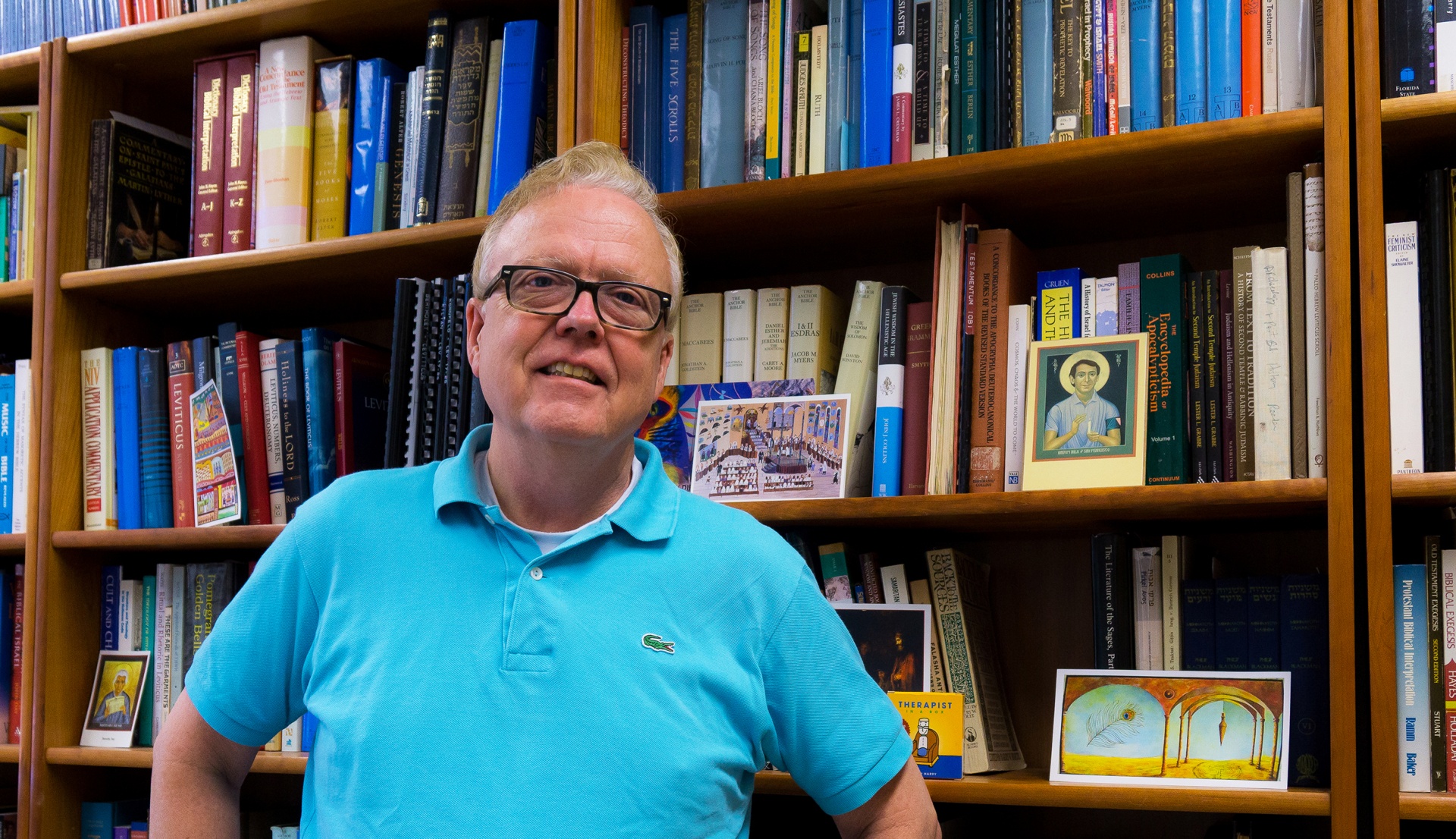
Professor David Tabb Stewart.
Images courtesy of David Tabb Stewart
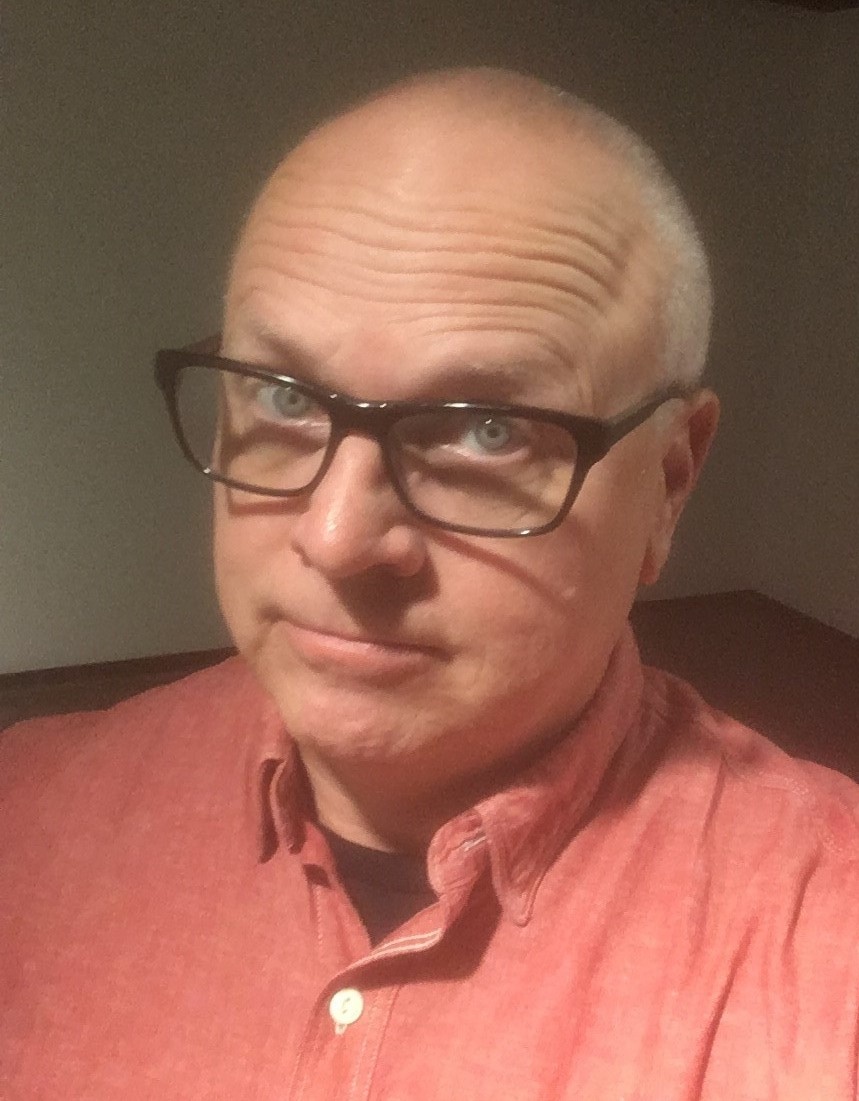
Ceramic Arts Program Head
School of Art
College of the Arts
Making Art Objects that Renegotiate How We Look at Art Objects
I work mostly in ceramics. As an artist, I’m interested in notions of objects of desire, curios or objects of curiosity, and objets d’art, and how the pleasure in looking, intimacy, and scrutiny associated with such notions might be triggered, heightened, and complicated by an object made by one person to be beheld by others.
I’m fascinated by the opportunities for peripatetic experience afforded by sculpture, the evocative and implicative potential of form, and the boundaries and exchanges between interior and exterior, as well as the way sculpture can immerse one in an awareness of the present that shifts moment to moment.
I desire for the works to be perceptually and associatively mercurial as one moves around them, and I’m always trying to create something present and compelling, hopefully even unforgettable, and yet unknowable. I’m also intrigued by, and am constantly exploring, the possibility of experiencing deep space and spatial complexity within a small(ish) form.
I try to produce works that will get viewers to lean in and step back, bob and weave a bit, crane their necks, and take a few laps around the object. I want to make works that cause you to engage in behaviors that would make museum guards nervous—works that if in vitrines would be surrounded by glass fogged by breath and smudged by noses and fingertips.


Professor Miles glazing a recent sculpture with the assistance of an electric hoist, one of many approaches he has explored in working in more body-friendly ways with heavy, awkward, and fragile objects in the studio.
Though the products of my Research, Scholarly and Creative Activity, or RSCA as we’re accustomed to calling it at CSULB, fall within the acronym’s second syllable, this Creative Activity has a lot of research behind it. There’s a constant reading process, lately a diet of mostly psychoanalytic theory, phenomenology, semiotics, and assorted art criticism, theory, and history.
On the empirical end, there’s ongoing research into formulating glazes, the glass layers that coat ceramic objects. While a lot of ceramics have one to a few glazes on them, my works are layered with twenty to forty. The glazes react with one another during firing, so aside from thinking about color and surface quality, I have to think of them kind of like ensemble players with roles.
Other research goes into the use of suspension systems and retractable armatures to build structures that otherwise aren’t easily achievable using clay, and the development of ergonomic equipment and body-friendly processes for working in ceramics.
My favorite reactions to the work are when people apologize for how close they’re getting or how attentively they’re scanning its surfaces—as if they’re breaking some kind of social norm, invading my personal space, or being presumptuously familiar. I can’t imagine a more rewarding response, and always encourage viewers to go ahead and take their time.
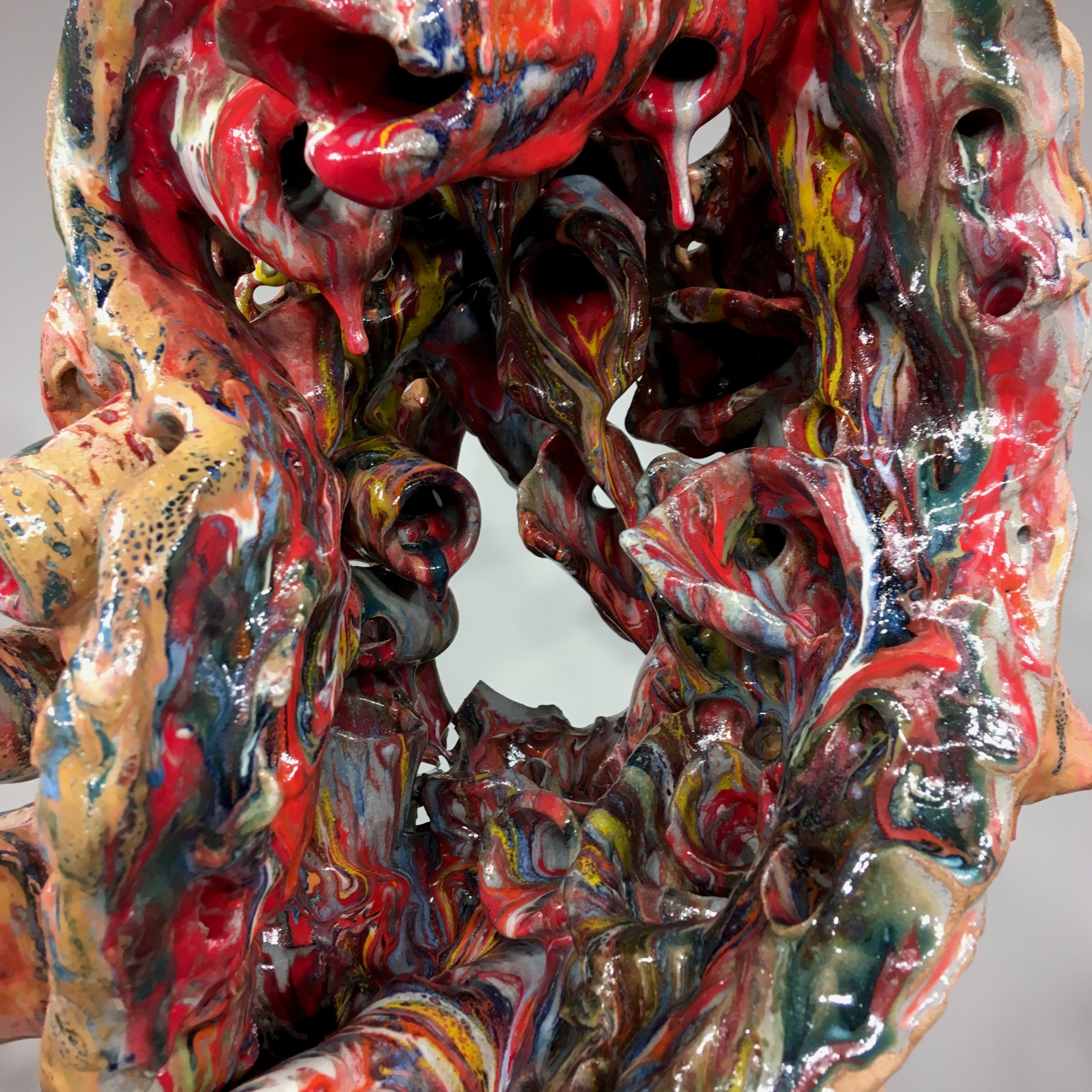

Exterior surface detail of a recent sculpture (left) and installation view (right) of a recent exhibition of ceramic sculptures by Professor Miles at UC Santa Barbara.
Images courtesy of Christopher Miles
By Assistant Professor Jonathan Phan
Human Resources Management
College of Business
Is Knowing What You Dislike a Better Predictor of Job Happiness?
Finding out what people dislike and helping them avoid these dislikes might be more important for their job satisfaction.
My research focuses on examining how you set up your surveys can lead to very different results and often times reveal novel phenomena. For example, many students have received at some point the advice, “find a job that you love and you will never have to work a day in your life.”
Contrary to this popular wisdom, decades of research have demonstrated that interest pursuit only weakly predicts job satisfaction, if at all.
Instead, what an employee dislikes doing maybe a better predictor of whether they will be satisfied at work. Drawing from semantic differential techniques, I replaced bipolar response formats with unipolar affective formats (e.g., asking how much you would feel interested, anxious, bored, etc. in doing a work activity).
I show across two studies and over 700 people, that there are two processes inherent in pursing your work interests: (a) the work people are drawn to, and (b) what they are averse to—both of which need to be captured to understand the link between interest (i.e., passion), fit, and satisfaction.
Notably, interest misfit (e.g., doing work you find boring) completely dominates any satisfaction gained from doing what you love (interest fit). These findings challenge the prevailing use of interests, which focuses only on what people like doing.


Model D versus Model E. Testing whether your passions one or two processes. Model E here is a better description of how people engage in their career pursuits. Figure by Phan and Rounds, 2018, Journal of Vocational Behavior, 106, pp. 27.
In another project, I use item response tree modeling over five studies to show that people who use the middle point on scale tells us a lot more about them than just their actual selected response. Namely, they display a trait that my collaborators and I call Middle-point Endorsement Habitude (MEH).
A person high in MEH is the sort of person that does not care about and is generally lacking in effort when doing most things. We show that this MEH trait is as stable as other known personality traits, and predicts life outcomes, such as how satisfied they will be, how likely they are to slack off at work, or even how much weight they will put on—even after a gap of three years.
What is useful about this method is that it can be obtained from any survey a person has previously taken, making it very easy to researchers and organizations to obtain and apply this research. This paper won the best student research methods paper at the 2019 Academy of Management Conference.
Images courtesy of Jonathan Phan
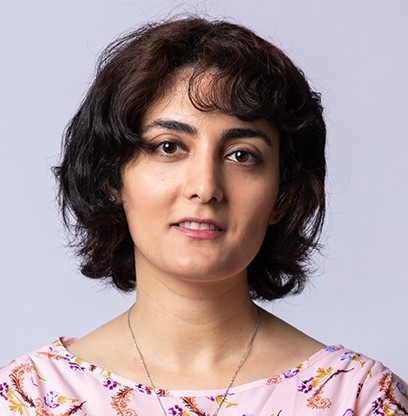
Chemical Engineering
College of Engineering
Students Learning to Adapt to and Solve Real-World Problems in Multi-Phase Flow Lab
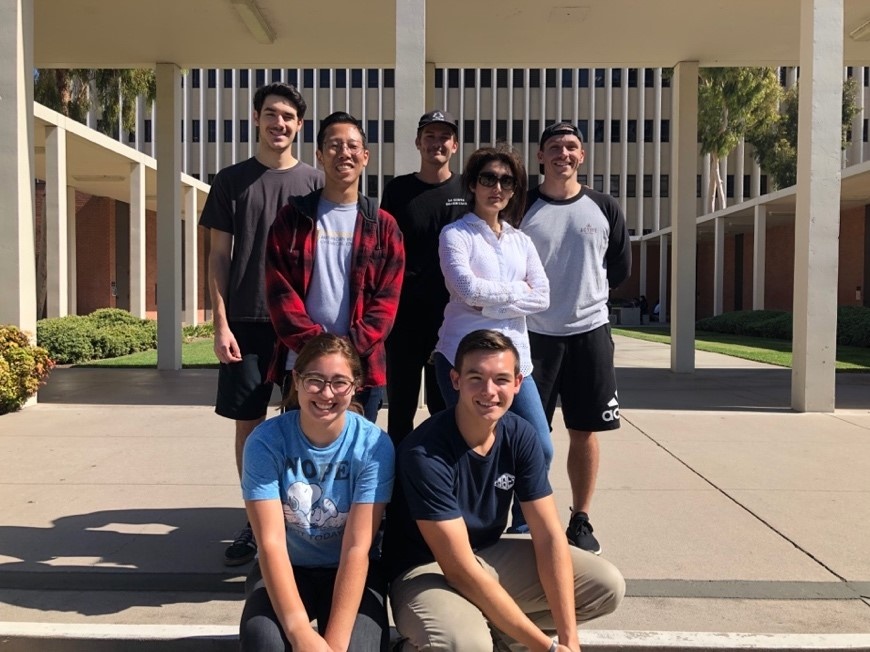
Professor Moghtadernejad with her student research team.
It is important that my students experience real-world applications in their research with the aim of solving challenging and contemporary industrial issues. To accomplish this, I oversee the Multiphase Flow Laboratory (MFL). The lab is equipped with state-of-the-art tools to closely reproduce real-life conditions and design various interesting experiments for a variety of industries.
In the lab, students are researching metal powder technology for additive manufacturing, pharmaceutical manufacturing processes, anti-corrosion and anti-icing coatings for aerospace, corrosion reduction in oil and gas pipes, and industrial health and safety processes.
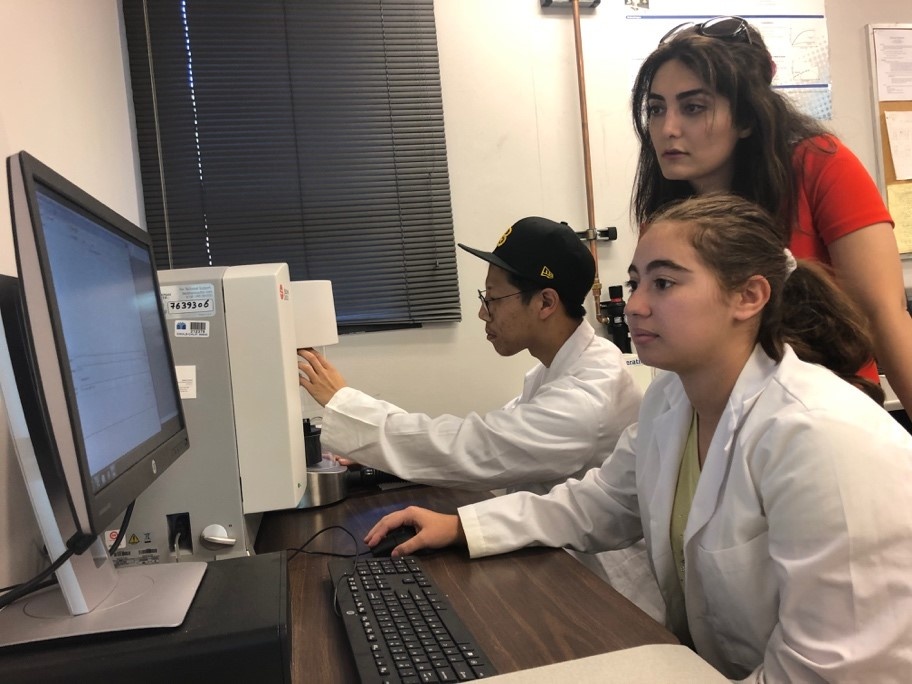
Professor Moghtadernejad overseeing students in the Powder Technology Research Group.
In just 40 years, half of product manufacturing is expected to shift from traditional manufacturing practices to the use of 3D printers. Some experts expect these changes to happen even sooner. As a result, one-quarter of the world’s trade is expected to be wiped out by 2060, with carmakers among the most affected.
Additionally, on a short-term horizon, sales of various additive manufacturing services is estimated to more than double to $35.6 billion by 2024 according to the State of the Industry Wohlers Report. In short, 3D printing is the future of manufacturing, because it produces intricate and customized parts in a one-step manufacturing process. The result is that finished products are lighter, stronger, and more durable than the traditionally made parts. A couple of famous applications are Nike’s Flyprint shoes and Rolls-Royce’s printed jet engines.
The introduction of metal powders to 3D printing is changing worldwide industries in ways that were not seen before. Nowadays, 3D printing of industrial components, such as automobile or aircraft bodies, are becoming the new normal. As a rapidly expanding industry, it demands distinct research problems. In the MFL lab, we break down metal properties and link them to various parts of the manufacturing process.
Another area of research we study is pharmaceutical manufacturing. The Active Pharmaceutical Ingredient (API) is the part of any drug that produces its effects. It is of utmost importance to understand the product manufacturability as a function of API’s physical properties, such as surface energy, particle size, etc. At the MFL lab, we develop the ability to design processes based on ingredient and blend properties. Moreover, we want to understand the effect of material properties on process performance to minimize product variability and maximize process productivity and process robustness.
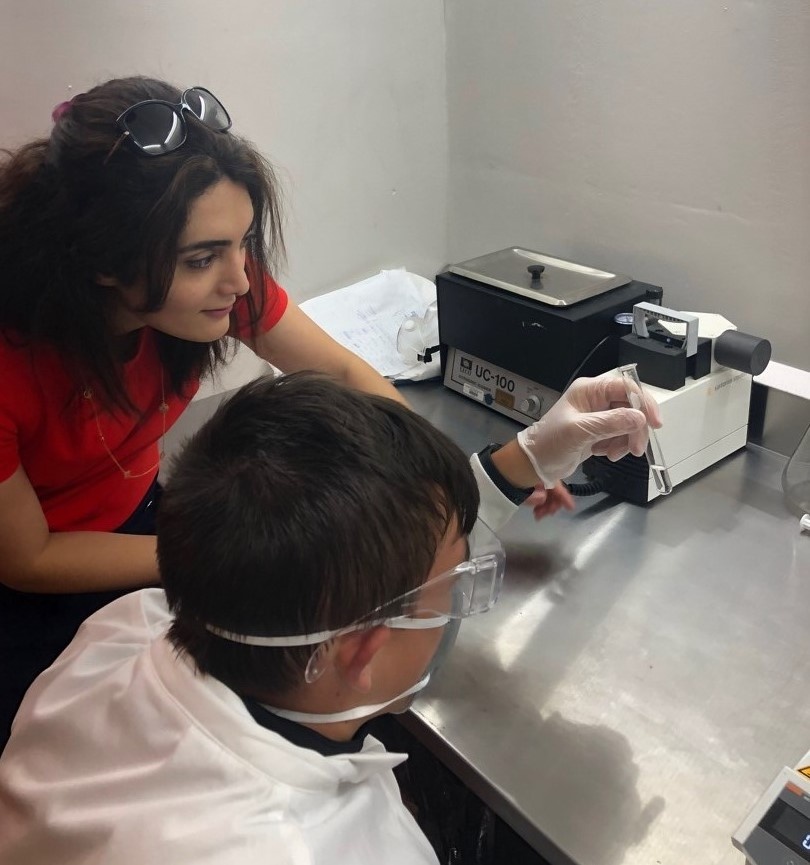
Professor Moghtadernejad with a student in the Coating Research Group.
As yet another fascinating subject, we investigate the interaction of liquid and surface in the MFL lab. Formally speaking, we study droplet dynamics on solid surfaces to address the icing issue for aircrafts. In that regard, we examine the effect of various surface structures and temperature and other environmental parameters on the creation of ice on wings. These results are then used to modify and design efficient surfaces.
Images courtesy of Sara Moghtadernejad





